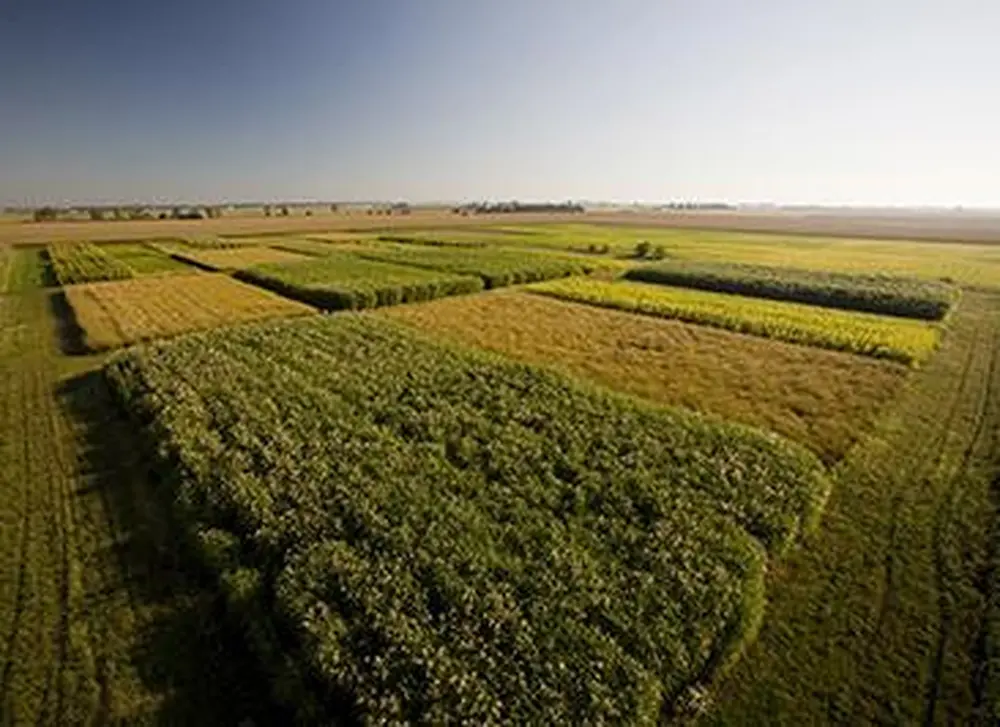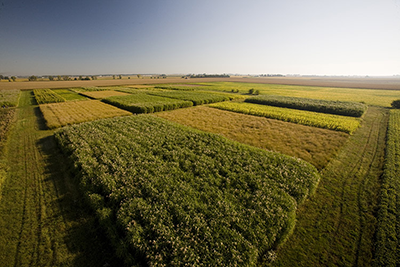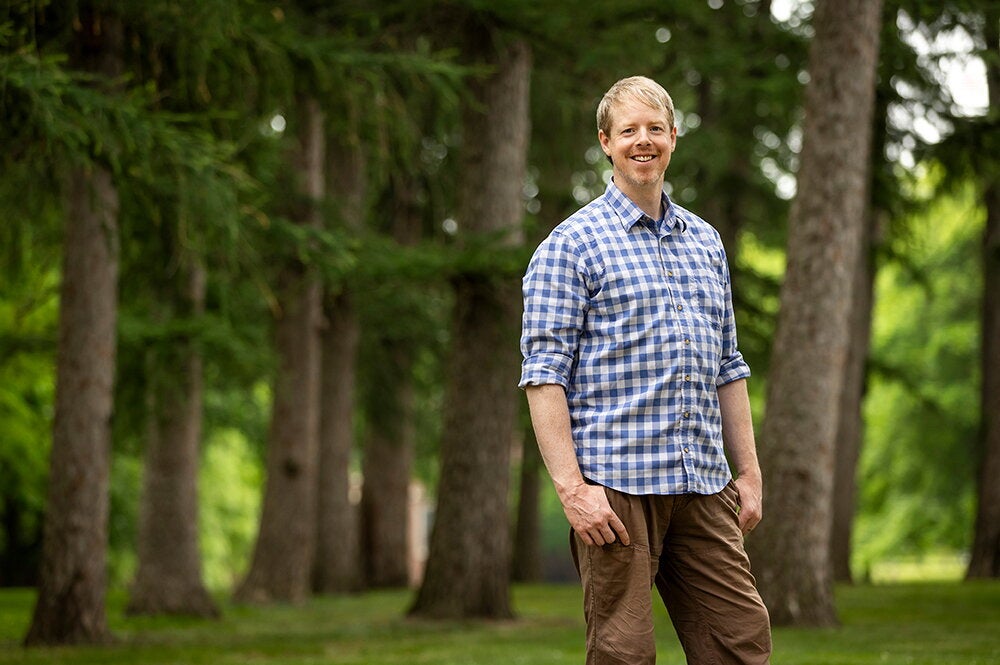

On the surface, it appears that policymakers are faced with a great dilemma. If we grow more biofuel crops, we reduce greenhouse gas emissions but we make it harder to grow food. If we grow more food in our fields, we have less land for environmentally beneficial biofuels.
So which will it be? Steve Long, U of I’s Gutgsell Endowed Chair of Plant Biology and Crop Sciences, suggests that maybe we shouldn’t spend so much time deliberating this question after all. He predicts that farmers can sustainably, and affordably, meet humanity’s growing demand for both food and fuel.
“It is not possible to control which fields are affected by climate change, but we can decide which fields could produce biofuels without impacting food production, and which crops will benefit the environment most,” says Long, who directs the Realizing Increased Photosynthetic Efficiency project at the Carl R. Woese Institute for Genomic Biology.
Long wrote an article (published by the National Academy of Engineering) on the topic with Chris Somerville, the University of California’s Philomathia Professor of Alternative Energy.
Biofuel crops capture and store carbon dioxide from the air, lowering greenhouse gases. This is especially true of the perennial biofuel crops, like miscanthus and prairie cordgrass. As a clean-burning alternative to gasoline, biofuels also reduce greenhouse gas emissions from your car.
Today 10 percent of your car’s fuel (or more if you use E85) comes from ethanol, a fuel often made from fermenting corn and sugarcane. An alternative—called cellulosic ethanol—is produced from plants (called feedstocks) that are not grown for food.
Corn ethanol produces 34 to 44 percent less greenhouse gas emissions than gasoline. Sugarcane ethanol reduces greenhouse gas emissions by more than 50 percent; some estimate it reduces it by as much as 82 percent. Cellulosic ethanol, when combined with carbon capture and storage, may be a carbon neutral source of fuel with no net greenhouse gas emissions.
Cellulosic feedstocks have a lot of other benefits: They convert more sunlight energy into biomass energy per unit land area than food crops. Their deep, soil-binding root systems preserve precious topsoil and recycle nutrients, requiring little or no additional fertilizer. And because they don’t have to be replanted each year, perennial feedstocks have an even smaller carbon footprint than annual crops.
Long and Somerville predict that over time acreage devoted to sugarcane and cellulosic biofuels will increase while corn—which has relatively fewer greenhouse gas benefits—will be grown almost exclusively for food and livestock feed.
The article notes that the U.S. is in a very fortunate position.
“The U.S. has many millions of acres of unused and marginal land that could support biofuel crop production, to the economic and environmental benefit of those regions,” Long says. “This cannot be done tomorrow, but with well-planned research and development, in 20 years these acres could provide a perpetual and sustainable source of fuels for the U.S.”
In time, biofuels will likely cost less than fossil fuels. While biofuels made from food and feed crops (e.g. corn and sugarcane) will increase the price of food, you won’t notice a price hike at the grocery store; the price of grain is a very small portion of retail food prices in developed countries. This also provides an incentive to the farmer to invest and improve efficiency of production, Long says.
Biofuels will increase food prices in developing regions where large numbers of urban people live on a few dollars a day and depend on raw grains. However, rural small farmers in these areas will benefit from higher crop prices and could invest their profits into increasing production, which would eventually decrease prices.
But ultimately it’s the environmental costs we have to worry about, Long says.
“We cannot afford to ignore the effects of greenhouse gas emissions on our climate,” says Long. “Failing to allocate acreage to produce these sustainable fuels will cost us much more in the long run. But to fully realize the potential of bioenergy, we need support for continued technical improvements, together with effective and enabling policies. Planned in an informed way we can have both food and fuel from plants.”


